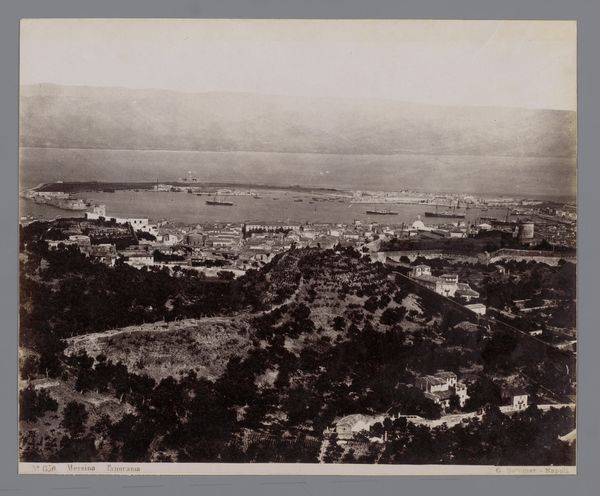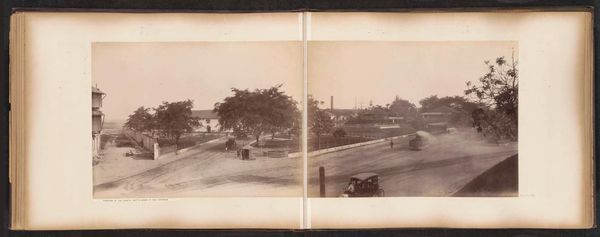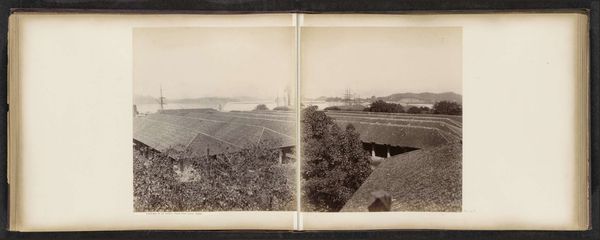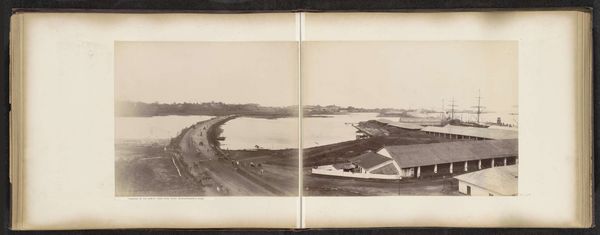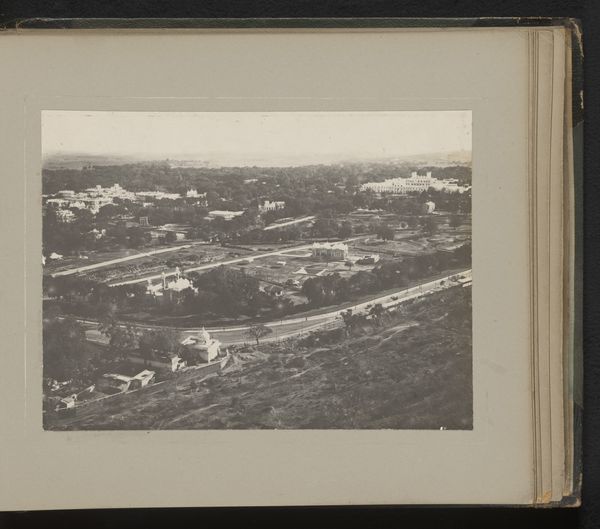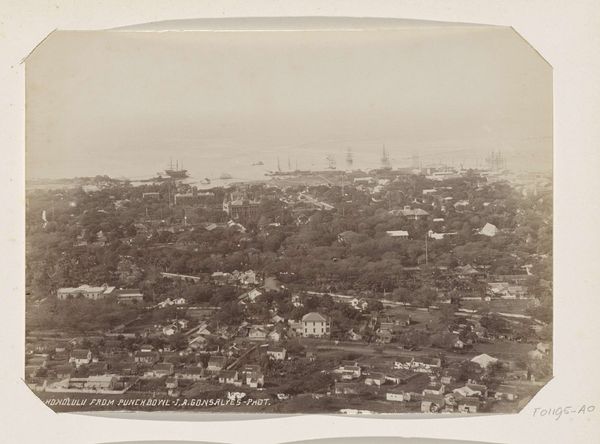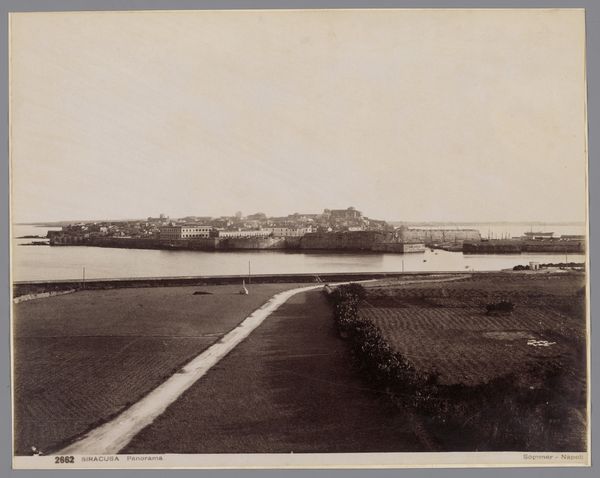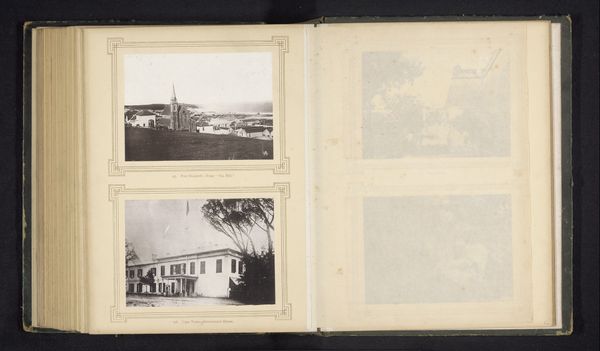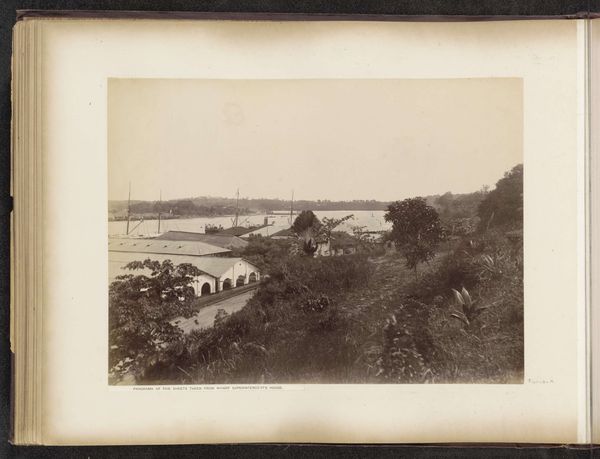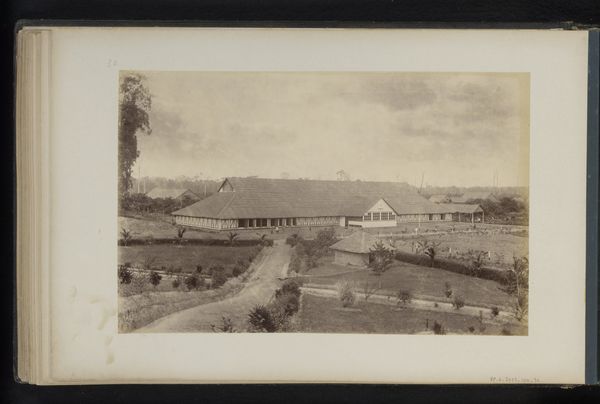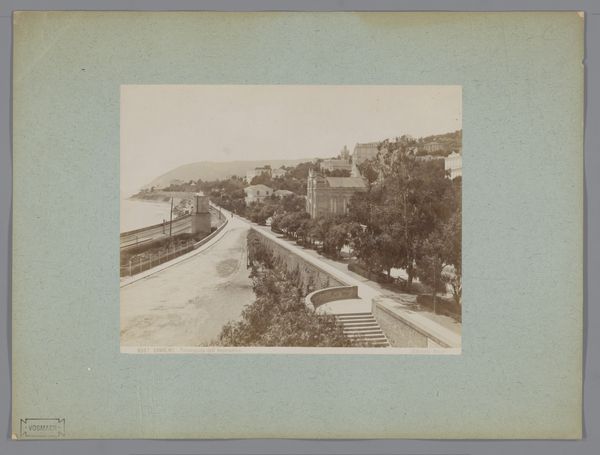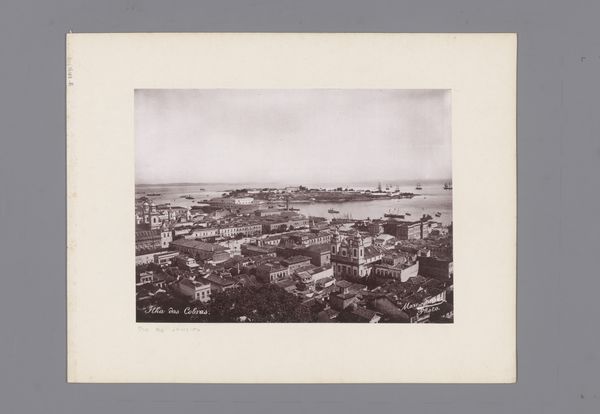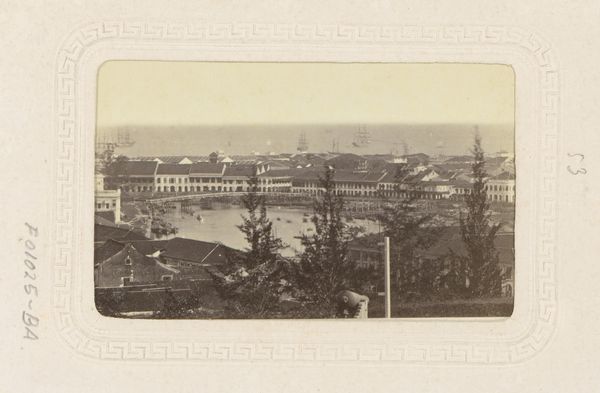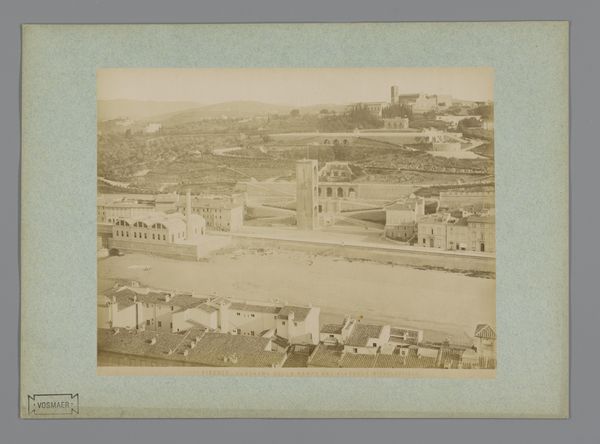
Gezicht op gebouwen en de omgeving van de Tanjong Pagar Dock Co. Ltd. in Singapore before 1905
0:00
0:00
photography, albumen-print
#
pictorialism
#
landscape
#
photography
#
orientalism
#
cityscape
#
albumen-print
Dimensions: height 310 mm, width 374 mm, height 310 mm, width 376 mm, height 316 mm, width 1304 mm
Copyright: Rijks Museum: Open Domain
Curator: Here we have a panoramic albumen print, "Gezicht op gebouwen en de omgeving van de Tanjong Pagar Dock Co. Ltd. in Singapore," dating from before 1905, created by G.R. Lambert & Co. Editor: The tonality immediately strikes me. It’s almost sepia, lending a dreamlike quality to this sprawling cityscape, yet the composition feels strangely regimented. Curator: Yes, the use of albumen printing, a popular process in the 19th century, contributes to that warmth. However, what I find particularly interesting is how this image fits into the visual language of colonialism. This company was commissioned, quite obviously, and therefore creates the images it was paid to create, a portrait of imperial power, perhaps? Editor: I agree there's a sense of curated order, but let’s look closer at the details of line and shape. Notice the stark geometry of the roofs against the organic forms of the trees. It establishes a fascinating tension. The high vantage point flattens the perspective, emphasizing the interplay of light and shadow. Curator: And that vantage point is, in itself, a statement. This is a controlled gaze, presenting Singapore from a position of authority, suggesting complete oversight and therefore, control. It mirrors the colonial administration’s desire to catalogue and dominate. Editor: Perhaps, but doesn’t the pictorialist style also invite us to consider the subjective experience? The soft focus and muted tones aren’t merely documentary; they also evoke a mood—a sense of place filtered through a particular aesthetic sensibility. Curator: It is worth noting that photography was, by this time, being used as a potent form of social documentation but even those intentions get twisted depending on who the commissioning force is. We cannot consider aesthetic style outside its production context, to the rise of orientalism, that fed western fantasies, ultimately contributing to social inequality. Editor: Indeed. By focusing intensely on both form and social message we are more deeply equipped to interpret the artwork. The convergence allows viewers to decode imagery by examining their personal biases and expectations of a globalized world. Curator: Exactly. Understanding this piece's historical and cultural environment enhances how the composition is perceived, and opens new conversations. Editor: Right. Focusing on both is more rewarding.
Comments
No comments
Be the first to comment and join the conversation on the ultimate creative platform.
